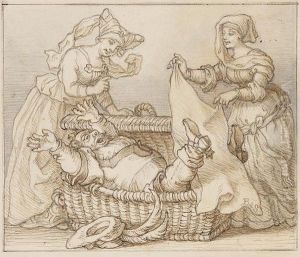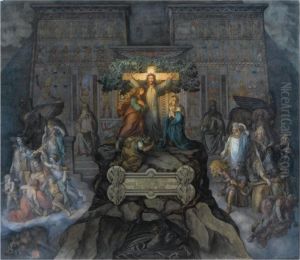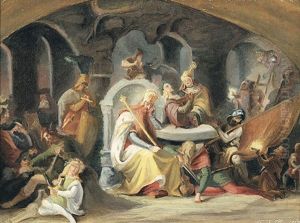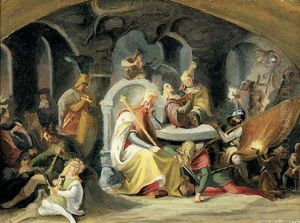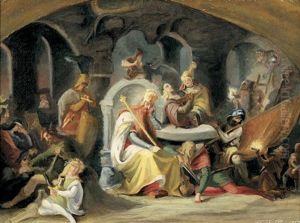Eduard Ille Paintings
Eduard Ille was a German illustrator and painter known for his works in the 19th century. Born on September 18, 1823, in Nuremberg, Bavaria, Ille showed an early aptitude for drawing and illustration. His artistic skills were nurtured in his hometown, which was a hub for art and culture during that period. Nuremberg had a rich history of craftsmanship and artistry, which provided a stimulating environment for the young Ille.
Ille received his formal art education at the Academy of Fine Arts Nuremberg, where he honed his skills in drawing and painting. He initially started his career as an illustrator, creating images for books, magazines, and newspapers. His illustrations often featured historical scenes, social commentaries, and depictions of everyday life, reflecting the interests and issues of his time.
Throughout his career, Ille contributed to various publications, gaining recognition for his detailed and expressive style. His work was characterized by a keen eye for detail and a strong narrative element, often capturing the nuances of human expression and the ambiance of the settings he portrayed.
In addition to his illustrations, Eduard Ille also created a number of paintings. While less known than his graphic works, these paintings continued to demonstrate his skill in composition and his ability to capture the essence of his subjects. He was part of the larger 19th-century German art movement, which was marked by a focus on realism and an interest in depicting the natural world and social realities.
Eduard Ille's contributions to the world of art were not limited to his own creations. He also played a role in the cultural life of his community, participating in art societies and exhibitions. His works were appreciated by his contemporaries for their clarity and attention to detail.
Ille passed away on August 5, 1900, in Munich, Germany. Although not as widely remembered as some of his contemporaries, Eduard Ille's body of work remains a testament to the rich illustrative traditions of 19th-century German art. His illustrations, in particular, continue to be of interest to historians and collectors for their depiction of the social and historical context of his era.
